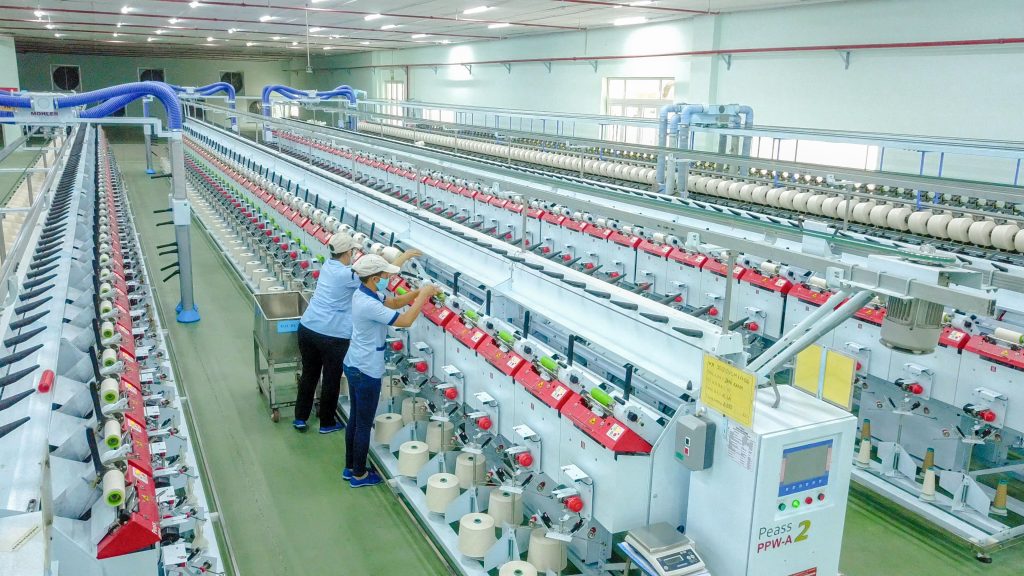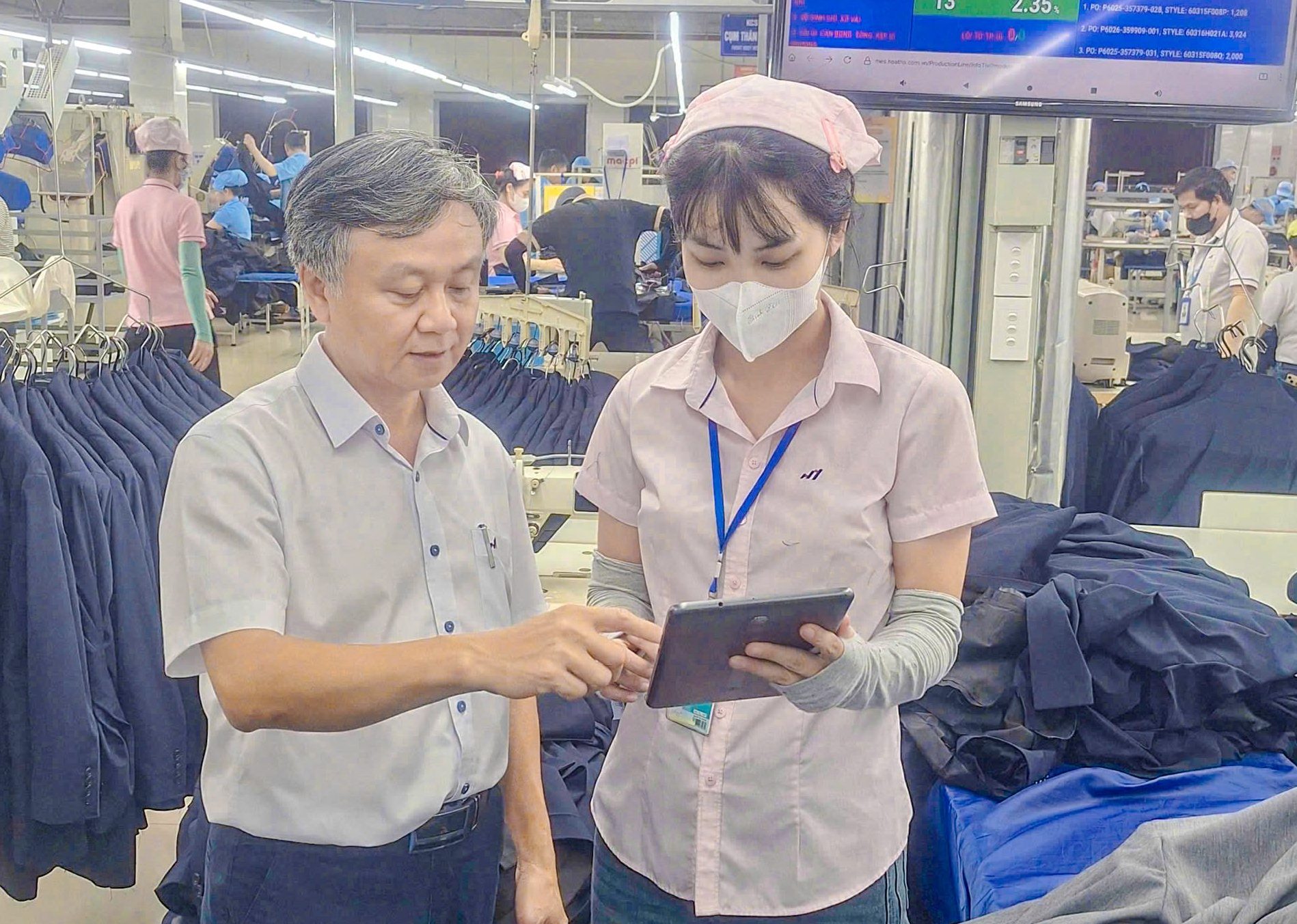Vietnam’s textile and garment exports are projected to reach the export target of $44 billion in 2024. For the Vietnam National Textile and Garment Group (Vinatex), the export turnover in the first nine months of 2024 reached nearly $1.5 billion, an increase of over 7% compared to the same period in 2023. The business performance in the first nine months of 2024 also showed more positive signs compared to the previous year, with revenue achieving 73.6% of the plan, up 2% year-on-year; profit reaching 90% of the plan, an increase of over 70% compared to the same period. However, there are still challenges that each company in the system must find suitable directions to successfully reach their goals for 2024, as well as prepare the potential and mindset for the business plan in 2025.

Prospects for Successful Achievement?
In the first nine months, the Garment units within the Group all performed effectively, with revenue increasing by 10% and profit rising by 24% compared to the same period in 2023. Some units with strong management and market foundations showed robust recovery, with profits for the nine months exceeding 75%, even surpassing 100% of the entire 2024 plan. However, the yarn sector still reported losses, although losses decreased by 80% compared to the first nine months of 2023.
Most of Vietnam’s major export markets for textiles and garments showed positive recovery signals. For the U.S. market, on September 18, the Fed lowered interest rates for the first time since March 2020, with GDP in Q2 2024 at 3%; inflation in August 2024 at 2.5% year-on-year, the lowest since March 2021; and retail sales in August also increased by 2.11% year-on-year. The European economy is gradually under control, with August inflation at 2.4%, the lowest since June 2021, and retail sales slightly increasing. Japan’s GDP in Q2 2024 grew by 2.9% year-on-year, up 7% from the previous quarter, despite high inflation, household spending is showing a slight upward trend.

The yarn sector is perceived to have slight improvements, but not yet significant. Raw cotton prices have been heavily influenced by speculation and logistics, leading to sudden fluctuations that are difficult to predict. Analyses indicate that the current increase in cotton prices is only temporary and lacks a solid demand base. It is hoped that by the end of 2024, cotton prices will stabilize and rise, but significant spikes are unlikely. Meanwhile, falling cotton prices lead to a decrease in yarn prices, with yarn prices increasing primarily depending on demand rather than increasing simultaneously with cotton prices. It is expected that in Q4, yarn demand will generally not recover strongly, coupled with rising shipping costs and intense competition from Chinese domestic yarns, will mean that the yarn sector’s performance shows no clear improvement.
The export market for the garment sector in the first nine months of the year has seen recovery due to a shift in orders from China, Bangladesh, and Myanmar to Vietnam. Inventory levels in key markets like the U.S., Europe, and Japan are gradually decreasing compared to the same period last year, combined with an upward trend in purchasing power, which has created a recovery in order demand from partners. It is expected that garment orders in Q4 2024 and Q1 2025 will continue to be abundant, although unit prices have not improved significantly. In the long term, when interest rate reduction policies in major markets genuinely have a positive impact on the economy, creating stable employment and purchasing power, unit prices will improve.
Thus, it can be seen that Vinatex is likely to successfully achieve its business plan for 2024, but caution is still needed in the context of a market that does not show many positive signals for us to hope for breakthrough results in the near future. As has been shared many times, market factors are never constant; those involved in managing business operations must proactively implement solutions to maximize efficiency, prepare resources to seize opportunities and anticipate risks to mitigate them.

Identifying Challenges to Resolve
“To know oneself is true progress” To prepare for a ready mindset for all unpredictable market situations, the Group and its member units clearly identify their difficulties and disadvantages to proactively focus on improvement, ensuring each company maximizes advantages while minimizing adverse factors. In this way, regardless of how the market evolves, we can still actively and confidently manage business operations flexibly and sustainably. In the short term, the issues we will face and need to resolve immediately in the final months of 2024 and 2025 are:
- Labor Shortages: A prominent issue that most units are facing is a labor shortage and intense competition for labor. The rate of employees leaving in the first half of 2024 at some units has equaled that of the entire year of 2023, and this trend continues to increase. Solutions to raise wages and financial incentives will drain the financial resources of enterprises and cannot be sustained indefinitely. More in-depth research and analysis are needed to identify the main causes; surveys of employee satisfaction within the company must be conducted to find more focused and appropriate solutions to retain workers and attract new labor from outside. Additionally, human resources departments in enterprises need to implement plans to maximize the use of existing resources; optimize management models, functional responsibilities of departments, and refine competency frameworks and job descriptions for precise workforce planning; utilize Enterprise Resource Planning (ERP) systems to enhance connectivity between production stages and departments both inside and outside the enterprise with minimal human resources.
- Focus on Increasing Total Factor Productivity: When discussing improving production efficiency, almost everyone first considers increasing labor productivity. However, individual labor productivity can only increase to a certain limit. For the top enterprises in the Group, the room for increasing labor productivity per capita is limited, so to achieve a breakthrough in labor productivity, reasonable management methods and high-level automation investment are required. Instead of simply increasing individual labor productivity, there should be a focus on increasing Total Factor Productivity (TFP), which accurately reflects and summarizes the effectiveness of capital and labor utilization. Focusing on investing in and improving intangible factors such as technology innovation, production rationalization, management improvements, and enhancing worker skills, helps to improve the efficiency of tangible factors (such as fixed assets and labor).
- Improving Production Capacity: The production capacities of units within the Group are not uniform, with a large percentage of machinery and equipment over ten years old. This is also a barrier to increasing productivity and improving quality, particularly in developing new products that meet market demands. Units need to have investment plans to improve production capacity and analyze effectiveness to make informed decisions on deep investments and technology upgrades.
- Increasing Added Value for Products Instead of Increasing Production Scale: Due to labor shortages, units need to prepare plans to shift to production areas that bring higher added value. Moreover, current order trends indicate that producing basic products in large quantities does not yield high efficiency due to very low processing prices; rather, fashion products in large quantities dominate. Therefore, it is necessary to actively develop the supply chain, especially in the design phase (distribution can also yield high efficiency but is challenging to develop at this stage due to the need for investment in a wide distribution network and market-capable personnel). The product development center model is being emphasized by many units and will certainly yield effective results in the short term. Additionally, the PD&B Center of the Group will accompany the units in implementing this strategy.
- Connecting Production Capacity Across the Supply Chain: Currently, the connection rate of yarn to weaving and weaving to sewing among the units in the Group is low. Additionally, there is a lack of weaving and dyeing production capacity that is not aligned with yarn and sewing, leading to weak chain linkage. The “ONE STOP” strategy is frequently mentioned in the Group’s development strategy, but the solutions for it have yet to show systematic implementation. Even in units with complete yarn-weaving-sewing chains, the rate of chain products is also low. In contrast, the recent challenging period showed that units produced in a chain demonstrated clear stability in efficiency. Units with complete production chains need to set specific goals for the chain product rate and actively pursue them. The Group also plans to enhance dyeing capacity to align better with yarn and sewing capabilities, initially creating a connection channel for a group of units with compatible products and technologies to form a chain for a few specific products (fire-retardant fabrics, towels, etc.).
- Commitment to Green Supply Chain Goals: The Group’s development strategy always aims to build a sustainable textile and garment supply chain, focusing on environmental standards and social responsibility, moving towards a circular business model. This is also a mandatory requirement from the major export markets for Vietnam’s textiles and garments, with increasing and stricter levels. In addition to being bound by government regulations and buyer requirements, enterprises themselves need to be aware of the necessity and responsibility in this area, seeing it as a vital condition for gaining competitive advantages soon.
Only three months remain until we enter 2025—the final year of the 2020-2025 term marked by significant upheavals and many “first-time occurrences” in the development history of the textile and garment industry. With the forecast for the final months of 2024 showing little brightness, enterprises must exercise utmost caution, tightly manage business operations following established plans, effectively identify and mitigate risks, and avoid any unexpected situations to commit to completing the annual plan. This is the necessary preparation for enterprises within the Vinatex system to have the “health” to seize the 2025 business plan without being dependent on market uncertainties.
Article by Vinatex’s CEO Cao Huu Hieu





